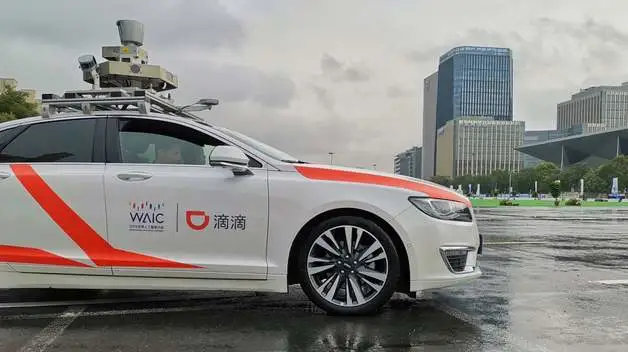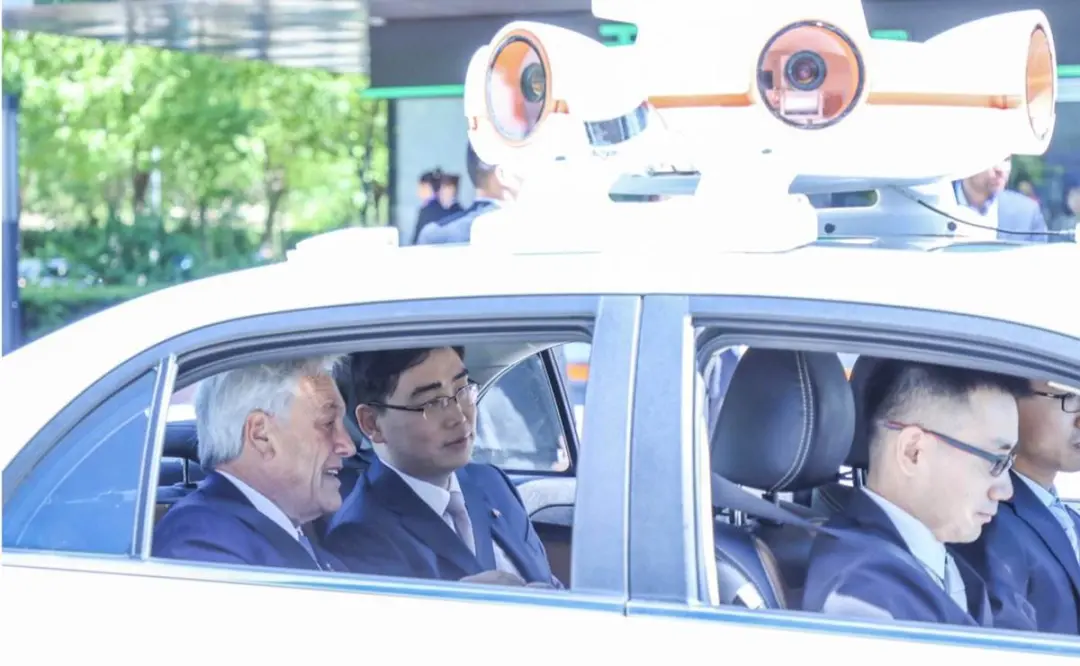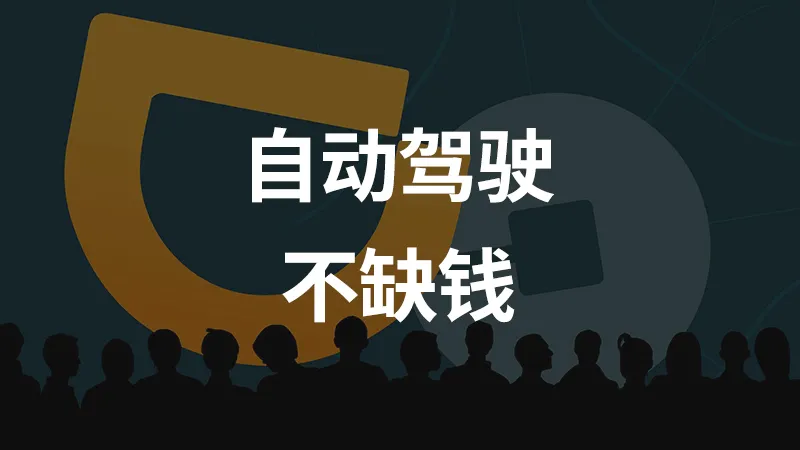It is an indisputable fact that the landing of autonomous driving is difficult. Since 2014, autonomous driving companies have sprung up like mushrooms after the rain, and the frenzy of capital has further boosted the industry’s rapid growth. However, reality has not gone in the direction envisioned by capital, and technology, regulations, policies, and other factors have prevented autonomous driving from landing on a large scale in the ordinary consumer field.
Like a chain reaction caused by the difficulty of commercialization, autonomous driving was once considered a bubble on the verge of collapse. Since 2018, capital has tended to be calm, and start-ups in autonomous driving have also begun to face financing difficulties.

According to public data, the difficulty of financing has not improved from the perspective of the number of companies that have completed financing. In 2018, 33 Chinese autonomous driving component and solution companies completed financing, while in 2019, there were only 25, a decrease of eight.
Moreover, due to the difficulty of landing fully autonomous driving, Chinese autonomous driving has begun to shift towards short-term commercializable specific scenarios, which has also prompted a large amount of financing funds to be concentrated from L4 and above solution companies to autonomous driving sub-industry component suppliers.
Autonomous driving companies, especially start-ups, have gradually begun to show differentiation in the past two years. Whether to adhere to developing L4 and above solutions or to change their thinking and become sensor component suppliers will directly affect the life and death of the company. There is no doubt that holding on to a fully autonomous driving solution is a game that only big companies can afford to play.
But there is a special presence in this, that is, “Didi.” In fact, even if many autonomous driving companies achieve the complete landing of fully autonomous driving in the future, from the commercial model itself, it is a variant of “Didi,” with the difference being whether to operate its own fleet or partner with car operators.
Looking at the financing of autonomous driving after entering 2020, the trend of the strong getting stronger is becoming more and more evident. First, Waymo, Pony.ai, WeRide, and other companies received strategic investments, and on March 24th, foreign media reported that Didi’s autonomous driving subsidiary had obtained strategic investment from SoftBank, demonstrating that capital is also beginning to focus on the head of autonomous driving.
Didi Autonomous Driving’s First FinancingOn March 24th, according to The Information, Didi is about to finalize a new financing round with SoftBank leading a $300 million investment into Didi’s autonomous driving subsidiary. This is SoftBank’s fourth investment in Didi and the first strategic investment in this subsidiary since Didi spun it off. The use of public transportation has significantly declined due to the epidemic, and according to official data from Didi, the number of orders for their ride-hailing business dropped 80% from January to February 2020. Although the number has recently rebounded, it is still far from the normal level. This means that Didi’s autonomous driving business, which has been burning money, can no longer rely solely on its parent company. Independent financing, like Waymo, is a short-term and long-term trend.
SoftBank’s investment in autonomous driving is persistent. On Monday, SoftBank announced that it will sell $41 billion in assets to ease its own debt pressure and provide funding support for share repurchases. SoftBank’s situation is not good at the moment, as investments in ride-hailing, Uber, and hotel chain, OYO, have both suffered declines in business due to the impact of COVID-19. WeWork, whose IPO failed last year, also experienced a significant drop in valuation, leading to a nearly 12% drop in SoftBank’s stock price in a single day. SoftBank also said it may withdraw from its planned purchase of WeWork stock. The investment losses have dealt a heavy blow to SoftBank Group.
However, SoftBank’s investment in the technology field has not slackened. SoftBank has raised $5 billion to invest in startups. The funding for Didi’s autonomous driving is a part of this $5 billion. Despite the significant impact of the epidemic on Didi’s core business, SoftBank’s investment is expected to be used only for autonomous driving research and development.
Why does SoftBank prefer Didi? SoftBank’s preference for technology companies in the industry is well known, but why does SoftBank prefer Didi in the autonomous driving or ride-hailing industry in China? It should be noted that in the big battles Didi fought in past years, with SoftBank’s joining, the situation turned in Didi’s favor. According to Didi’s financing news, SoftBank has invested approximately $9 billion in Didi’s ride-hailing operations in the past three rounds, and with this $300 million investment in the autonomous driving business, SoftBank has bet nearly $10 billion on Didi.Actually, it is not difficult to understand that the ultimate form of the development of autonomous driving is fully automated driving. However, no matter what form it takes, commercialization is the ultimate goal that commercial companies pursue. Some industry insiders have said before that although there seem to be many players in the field of autonomous driving, other companies besides DiDi are also becoming “DiDis”. Although this point of view is biased, it also provides another way of thinking, which is that besides DiDi and Uber, other autonomous driving companies are becoming more and more first- or second-tier suppliers.
Changing traffic efficiency requires deep thinking. SoftBank invested in Alibaba because Alibaba will change people’s shopping habits. Whether being a primary or secondary supplier in the industry chain itself is not a problem but whether it conforms to SoftBank’s vision for the future is key. SoftBank wants to be the number one in this field, so DiDi has both short-term and long-term advantages.
DiDi has a strong user barrier since it is both a to-B type enterprise and a to-C type enterprise, meeting the needs of both taxi companies and consumers. The differentiation of autonomous driving may lead to a new round of competition, and DiDi’s huge user base may be a natural advantage for DiDi to solve automatic driving traffic data and planning paths.

In August 2019, DiDi announced the establishment of a “DiDi Woya” subsidiary by splitting its autonomous driving business and maintaining independent operations. SoftBank’s investment is also the first external financing for DiDi Woya since its establishment.
After publicly splitting its autonomous driving business, DiDi has been active in this area. First, it announced that it had obtained Shanghai’s automatic driving road test license and its L4 level autonomous driving fleet was unveiled at the World Artificial Intelligence Conference, which was open to the public for experience. DiDi CEO Cheng Wei personally promoted autonomous driving and stated in public occasions that he would accelerate the testing of DiDi’s autonomous driving in Shanghai and invite ordinary users to participate in the experience.
In September last year, Zhang Bo, CEO of DiDi’s autonomous driving company, revealed that the company will put 30 autonomous driving test vehicles on the road in Shanghai, and the order distance can exceed 10 kilometers.

Later, DiDi revealed that together with SAIC and BMW, it obtained the first smart connected vehicle demonstration application license in Shanghai, which means that DiDi can try out functional passenger applications in Shanghai’s urban roads.Didi Woya also utilizes Didi’s powerful transportation platform to conduct large-scale testing on existing vehicles. Combining software and hardware is Didi’s strategy. Didi has publicly stated that the number of cameras installed for its ride-hailing vehicles has reached hundreds of thousands, with the goal of collecting more road data and special scenario data, which will also provide learning basis for Didi’s autonomous driving technology.
Currently, through its ride-hailing service, Didi provides up to 30 million trips per day in 400 cities in China. According to a conservative estimate of 5 kilometers per trip, the accumulated mileage in a year exceeds 30 billion kilometers, which is tens of times the Autopilot mileage accumulated by Tesla in the past few years.
In contrast to Waymo, which is recognized for its strong technology but still faces serious commercialization issues in the short term, Didi Chuxing is a necessary transportation option. Therefore, Didi Woya relies on its transportation services to achieve early data accumulation and technology testing, to explore operating and business models in the medium term, and in the later stage, to determine the model and gradually carry out passenger services, waiting for regulations and other criteria, thus achieving a synergistic effect throughout the entire cycle of transportation and autonomous driving.
Didi’s Ecological Map
To outsiders, Didi seems to be just a ride-hailing company, but in fact, Didi has already transformed its business model from a single ride-hailing service to touching on auto finance, auto e-commerce, and auto aftermarkets based on basic transportation services, and this is only in China.
Looking at its global business, Didi has continuously invested in Southeast Asian transportation company Grab, South Asian transportation company Ola, European and African transportation company Taxify, and American transportation company Lyft. It has acquired Brazilian ride-hailing platform 99 and collaborated with Middle Eastern and North African transportation platform Careem/Japan SoftBank. It has also launched transportation services in Australia. Through the above investments, acquisitions, or partnerships, Didi’s basic transportation services have achieved global coverage.

The biggest benefit in all of this is data acquisition. Although Waymo has launched autonomous taxi and freight services in the United States, these are still limited in scale. In addition, in order to achieve nationwide testing in more countries, Waymo still needs the cooperation of local policies, but Didi can solve part of the data collection through its transportation business.
Secondly, there are strategic collaborations with automakers. Since rumors of cooperation with Volkswagen in 2014, Didi’s interaction with major automakers has become increasingly frequent, and the “Huoli Alliance” established in April 2018 may be the largest joint effort between Didi and major automakers.Didi claims to have established strategic partnerships with 31 automakers, covering almost all major automakers. Later, Didi also established joint ventures with Volkswagen, Toyota, and others to achieve deeper cooperation. In September 2019, Toyota also strategically invested in Didi.

The above is Didi’s current business map. In fact, when Didi acquired Uber China, Didi CEO Cheng Wei expressed in an exclusive TV interview that the ultimate form of travel services is actually to serve future autonomous driving services, and Didi’s goal is to change people’s travel habits and improve transportation operations efficiency. Therefore, Didi is just achieving the goal of operating autonomous driving vehicles in a different way.
Supporting Didi is a technology architecture system, which is also the most important part of Didi’s mobile travel ecosystem. From the Didi official website, it can be found that Didi’s technology system includes four major segments: “Didi Brain”, “Intelligent Traffic”, “Didi Security”, “Artificial Intelligence Laboratory” and “Intelligent Driving”. Among them, the first three segments are more for supporting its travel business.
The last two segments mainly support its autonomous driving business. The technology-driven approach had already penetrated deeply into Didi’s internal structure before the establishment of its autonomous driving department. In 2017, the technology layout had already taken shape.
-
On January 26, 2017, Didi announced the establishment of AI Labs in Mountain View, California, to increase forward-looking basic research on artificial intelligence and attract scientific research talents.
-
In March 2017, Didi announced the establishment of DiDi Labs, its US-based research institute.
-
In August 2017, Didi and Udacity held a self-driving test vehicle challenge.
-
In November 2017, Didi chose to open a new site in Silicon Valley Mountain View and announced that its main work is to research and develop big data, smart transportation, and intelligent travel.
-
In November 2017, Didi established the map company “DiTu Technology” with a registered capital of 5 million yuan. High-precision maps are very important for autonomous driving. High-precision maps can extend the sensor’s sensing range, provide road condition information support for the positioning, perception, and decision-making of self-driving test vehicles running at high speed, and provide security guarantees.# Didi’s Advantages in Autonomous Driving Business
The underlying technology is just one aspect of Didi’s autonomous driving business. Didi also has significant advantages in other areas, due to the massive amount of transportation data it has accumulated and its partnerships with other companies that provide basic traffic information. This data provides a solid foundation for Didi’s high-precision maps and other underlying technologies, and even gives Didi the opportunity to establish industry standards in China – a unique advantage of Didi’s.
Therefore, Didi’s ecological landscape is becoming increasingly clear. By leveraging its technology layout to support derivative services, basic transportation services, and future autonomous driving services for the masses through its ride-hailing platform, Didi is able to rapidly capture a leading position in the market. Autonomous driving is also crucial to Didi’s future, determining whether it can have more say in the automobile and industrial enterprise industries. Although autonomous driving may seem ordinary to outsiders, it may be the second life for Didi.
Lastly, the investment from Softbank reflects Didi’s value. Softbank’s reputation in China is mainly due to its successful investment in Alibaba. If there is a protracted competition in a certain field, Softbank’s entry essentially marks the end of the war. Softbank is fond of the mobility sector, as evidenced by its investments in Didi in China, Uber in the United States, and Ola in India. Anyone has the chance to become the “Alibaba” of this sector, and Softbank may prefer Didi simply because the Chinese market is full of unlimited possibilities and Didi’s leading position in China is well-established.
For Didi, an independent autonomous driving business is a good choice. Unlike Baidu and Waymo, relying on its parent company is not practical for Didi, as it has already lost 39 billion RMB by 2018, and continues to lose money with the added impact of the pandemic. Even Google, which spends tens of billions of dollars on Waymo each year, cannot sustain the burden without external financing – a strategy that Didi has clearly adopted as well.
External funding can reduce Didi’s financial risk and increase its R&D capabilities. More importantly, with more shareholders, it is possible to explore more feasible models.markdown
Although there are still many players in the field of autonomous driving, there has been an obvious polarization and the so-called head effect. After the previous industry adjustment, many players have become component suppliers, which they deny but is the fact. Meanwhile, companies like Didi, Uber, and Waymo have started to deeply integrate into the industry. From the financing situations of these companies, it can be seen that there has been a head effect in the field of autonomous driving travel services.
This article is a translation by ChatGPT of a Chinese report from 42HOW. If you have any questions about it, please email bd@42how.com.
